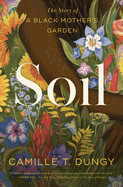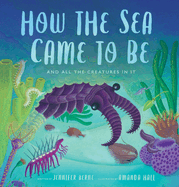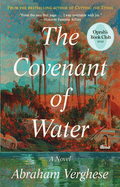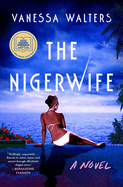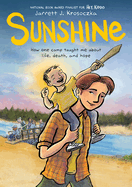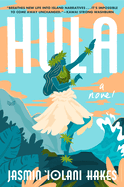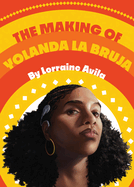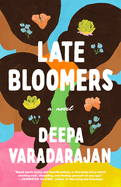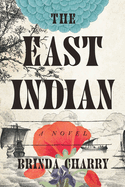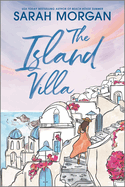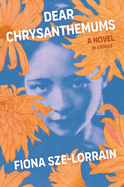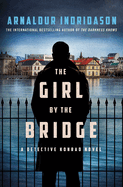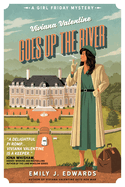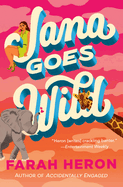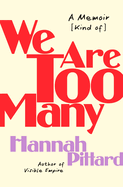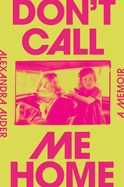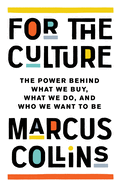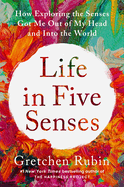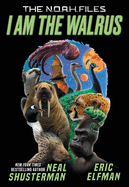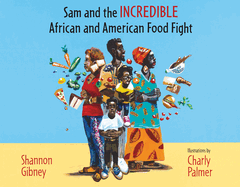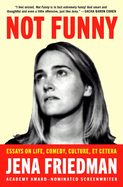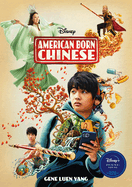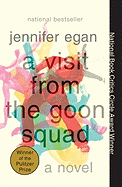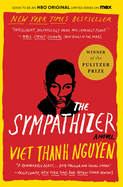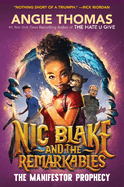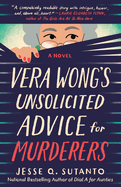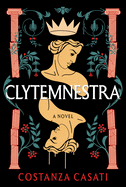Friday, May 5, 2023
We have plenty of not-to-miss fiction this week: Janika Oza's debut novel, A History of Burning, a "stunning multigenerational saga" that follows a family from India to Kenya to Uganda, to Canada and the U.K. Hula, Jasmin Iolani Hakes's debut, is an "emotionally resonant, lyrical depiction" of three generations of Hawaiian women and their homeland. And Vanessa Walters's American debut, The Nigerwife, is "a gripping work of suspense, a psychological puzzle, a mystery, and a critique of marriage and high society." Plus so many more!
In The Writer's Life, Abraham Verghese discusses why he wanted to locate his long-awaited second novel, A Covenant of Water in "a new geography," and how he was moved to do so by his mother's response to his niece's question: "[W]hat was it like when you were a little girl?"
A History of Burning
by Janika Oza
Janika Oza's A History of Burning is a stunning multigenerational saga that follows a family and a community who move during the years 1898 to 1992 from India to Kenya to Uganda, to Canada and the U.K., and beyond. In nearly a dozen voices, Oza's debut novel illuminates immigration patterns and pain alongside familial joys and sorrows.
Readers first meet 13-year-old Pirbhai in Gujarat, India; he is, as the oldest son, fierce with the need to provide for his family. In exchange for a coin and the promise of opportunity, he unwittingly sells himself into labor on the railroad the British are building in East Africa. Pirbhai builds a family and a community with other Indian Africans; his children and grandchildren feel buoyed by the strong ties but sometimes limited by the strictures of tradition and duty. After Ugandan independence, anti-Asian sentiment drives them out of the only country they have known. Pirbhai's son, Vinod, thinks there must be a "third possibility--not African, not Indian, but something beyond borders, an identity forged over decades of scattering apart and, miraculously, finding repair." Each generation struggles in a new place, the tight-knit family always navigating change and searching for a place to call their own. Oza's gorgeous prose is lush with detail--colors, flavors, emotions--and saturated with loveliness and pain, "the messy, the beautiful, the wild improbable light." A History of Burning admirably charts how--by the time Pirbhai's descendants plant seeds in Canadian soil--history, both personal and collective, is formed from the stories we tell and the silences we allow to remain. --Julia Kastner, librarian, teacher and blogger at pagesofjulia
Discover: This novel, spanning generations and continents, from India to East Africa and beyond, masterfully portrays the love and sorrows of family and the search for home.
The Covenant of Water
by Abraham Verghese
Abraham Verghese's sprawling second novel, The Covenant of Water, traces the epic story of a family in southern India afflicted by a mysterious condition: at least one person in every generation dies by drowning.
Verghese (Cutting for Stone) sets his story in the small community of Saint Thomas Christians in Kerala, centered on the estate of Parambil. When a 12-year-old child bride--unnamed, but literate, unusual for her time--is married off to a 40-year-old widower in 1900, she becomes the surrogate mother to his two-year-old son, JoJo. Disoriented and lonely at first, she will eventually transform into Big Ammachi, the matriarch of Parambil and a wise, steady, thoughtful figure in the lives of the other characters. After a tragedy strikes, Big Ammachi discovers a handwritten document outlining the Condition, the water-related affliction that has affected generations of her husband's family. She can neither prevent nor cure this disease, but seeks to understand it, especially as it comes to affect her son, Philipose, and other family members.
In Part Two, Verghese shifts gears to focus on Digby, a young Scotsman who signs up for the Indian Medical Service after the death of his mother. Digby's destiny will eventually intersect with that of the family at Parambil, via a sanctuary for leprosy patients run by a compassionate Swede named Dr. Rune Orqvist.
Vast in scope and also surprisingly intimate, Verghese's novel covers most of the 20th century in India, but is ultimately the story of a family--blood and chosen--caring for each other through all of life's challenges and changes. --Katie Noah Gibson, blogger at Cakes, Tea and Dreams
Discover: Abraham Verghese's epic and compassionate second novel explores the multigenerational loves and losses of a South Indian family afflicted with a mysterious drowning condition.
The Nigerwife
by Vanessa Walters
Vanessa Walters's American debut, The Nigerwife, is a gripping work of suspense, a psychological puzzle, a mystery, and a critique of marriage and high society. The prologue begins: "Nicole often wondered what had happened to the body." This foreshadowing refers to a body floating in a trash-filled Lagos lagoon, viewed from the home of a young woman who had recently left London to join her Nigerian-born husband. This narrative perspective, "Nicole, Before," defines every other chapter of the novel, interspersed with the viewpoint of "Claudine, After." The pivotal event of these dual timelines is Nicole's disappearance, which gives the prologue's opening line new and sinister meaning.
Nicole spent years in Lagos with her husband, Tonye, and their two young sons. She ceased communication with her family in London and formed and dissolved friendships both in and out of a club called the Nigerwives. For Nicole--and perhaps for other Nigerwives before her--that adventure would end badly. Between fancy dress and art openings, social posturing and boating parties, she struggled to keep her sanity and independence.
In the days after Nicole goes missing, the aunt who raised her travels to Lagos to look for answers. Claudine does not know Tonye's family well and is dismayed to find how little the family or the police seem to be doing to find Nicole. As their timelines progress, Claudine and Nicole each work separately to sort out the family issues that drove them apart. This engrossing novel both entertains, with the mystery at its heart, and provokes questions that go far beyond Nicole's personal story. --Julia Kastner, librarian and blogger at pagesofjulia
Discover: In this riveting novel about a young woman's disappearance, Lagos high society hides personal struggles and larger cultural concerns.
Hula
by Jasmin Iolani Hakes
Jasmin Iolani Hakes's debut novel, Hula, is an emotionally resonant, lyrical depiction of the complicated relationships among three generations of Hawaiian women and their homeland. Hakes blends reality and fiction in her hometown of Hilo, Hawai'i, as she follows three women in the Naupaka Ohana from the 1960s through the 1990s.
After enduring her mother Hulali's near-obsessive hula training, Laka leaves Hilo immediately after winning the real-life Miss Aloha Hula competition. Two years later, Laka returns to Hilo--with a red-haired, light-skinned baby. Baby Hi'i grows up in the shadow of her mother's hula win and temporary flight, dogged by prejudice from her grandmother and rumors that Laka isn't her birth mother. Laka and Hi'i are determined to be different from their mothers, but they both struggle with family and cultural expectations. Laka is an inconsistent parent, even if she never gives in to her mother's demands for a birth certificate. Hi'i follows in Laka's footsteps and leaves Hilo as soon as possible, without notice. When she returns to Hilo with her own children, Hi'i's family must confront decades of conflict and hurt. Throughout, Hakes adeptly ties the Naupakas' path to the history of the Kingdom of Hawai'i and its illegal annexation by the United States.
Like its namesake, Hula evokes the spirit of Hawai'i: the land and its people, their struggles and joys, and the complexities of survival under colonialism. Hula is an ode to family, home, and culture for fans of Brit Bennett and Tommy Orange. --Suzanne Krohn, librarian and freelance reviewer
Discover: This insightful historical debut is a fierce love song dedicated to family, women, Hawai'i, and the enduring resistance of a people under colonialism.
The Beach House
by Jenny Hale
Romance author Jenny Hale (Christmas Wishes and Mistletoe Kisses) introduces readers to the quaint town of Rosemary Bay, Fla., for a charming and intriguing love story with a twist of mystery in The Beach House. After caring for her grandmother through years of chemotherapy, Melanie Simpson has lost herself and all direction. However, she must deal with her gram's dying request: that Melanie use her inheritance to purchase and restore the beach house they used to admire on their walks together, left to ruin after the death of its owner, Alfred Ellis.
Melanie and her sister arrive in Rosemary Bay to kick-start the renovation and turn the house into a beachside bed-and-breakfast. On their first night in town, the two find themselves wagering with a group of locals over a dart game. Contractor Josh Claiborne, who is narrowly losing the game, begrudgingly agrees to come look at the Ellis house's legendary haunted halls. His determination to leave Rosemary Bay behind for New York slowly reveals his own past and his reasons for wanting a fresh start. However, fixing windows, building porches, and tearing down old wallpaper uncovers more than the two bargained for--and a mystery Melanie is determined to solve. The pair's present and past begin to intertwine with the discovery of a box of old letters in a closet. As the two sift through secrets of the past with their futures on the line, this slow-burn romance explores second chances, family histories, and the strength of true love conquering all. --Clara Newton, freelance reviewer
Discover: The Beach House is a romance full of sweet moments, second chances, and intriguing family secrets.
Late Bloomers
by Deepa Varadarajan
There's something inherently brave about starting over, as Deepa Varadarajan explores in her charming debut novel, Late Bloomers. That's what Nikesh thinks of his parents, anyway, watching "the two of them trying to cobble together new lives while other Indian people their age were settling into creaky lawn chairs... reconciling themselves to deadened marriages and eventless retirements." But not Suresh and Lata, who have divorced after 36 years of unhappy marriage. Lata gets her first-ever job at a local university's music library and enjoys living alone in her condo. Suresh turns to online dating, eternally optimistic despite the never-ending lies of "[a]ll these internet women." And while Nikesh finds his father's dating adventures somewhat romantic, his sister, Priya, describes her father's behavior as "post-midlife crisis; act your age; ridiculous; embarrassment."
Late Bloomers is a novel that celebrates love--and the quest for it--in all of its many varieties: familial, romantic, parental, dutiful, young, old, passionate, passionless. Through complex characters and the many ways they knock together, Varadarajan offers a novel shaped--but not defined--by the flaws of its characters, a story that peels back their layers as they find their way as individuals and as a family. Late Bloomers, at times laugh-out-loud funny and at times quietly heartbreaking, is an intricate novel about people who rediscover themselves. Or perhaps, by being honest with themselves and with each other, discover themselves for the very first time. --Kerry McHugh, freelance writer
Discover: A family of four gets a second chance at self-discovery--as individuals and as a family--following the dissolution of a decades-long unhappy marriage.
The East Indian
by Brinda Charry
The East Indian by Brinda Charry is both a historical adventure novel and a coming-of-age drama, featuring a boy bought to 1630s colonial Virginia from India by way of England and his improbable rise from indentured servitude on a tobacco plantation to a respected medical practitioner and healer. Seen through the wondrous large brown eyes of its charming, youthful protagonist, Tony, Charry's U.S. debut is a dazzling first-person account of a reluctant traveler destined to a life of movement, displacement, and persistent reinvention.
The story begins in a salt-encrusted Indian coastal town where Tony lives with his doting mother, a courtesan known for her graceful, stunning beauty. After she succumbs to cholera, Tony is sent by his mother's lover, East India Company man Sir Francis Day, to London to work for a wealthy merchant. Things do not go as planned for the boy. Homesick for his mother's warm embrace, he treads a rocky path toward adulthood, with several spectacular twists and dark turns leading eventually to the joys of first love and a coveted job as a physician's assistant.
Tony, known simply as "Tony East Indian," is the namesake of an obscure historical figure Charry discovered in the American colonial archives, a long forgotten brown-skinned man documented as the first South Asian person to set foot in America. Charry's bold, imaginative storytelling makes The East Indian a tender tribute to the earliest laborers who survived by their wits as servants and enslaved, fated to build new lives far from home. It bears all the markings of a well-loved classic. --Shahina Piyarali, reviewer
Discover: This handsomely written and well-researched historical adventure novel and coming-of-age drama features a boy brought to 1630s colonial Virginia from India by way of England.
The Island Villa
by Sarah Morgan
An estranged, dysfunctional family reunites for a summer wedding on Corfu, a rugged island paradise off the coast of Greece, in the insightful The Island Villa by prolific British author Sarah Morgan (The Summer Seekers; One Summer in Paris; The Christmas Sisters). Family matriarch Catherine Swift is a wildly successful romance novelist. Her own life, however, isn't so happily-ever-after. Married three times with two daughters conceived from different husbands, she is tying the knot for a fourth time. Might these nuptials offer a chance for mother-daughter reconciliation--and for her two adult children, eight years apart, to finally bond?
The two daughters couldn't be more different. Thirty-year-old Adeline, the older one--emotionally buttoned-up and self-reliant--is hesitant to attend the wedding. She was only eight years old when her parents divorced, and she's skeptical about her mother's wedded bliss. Nevertheless, after Adeline breaks up with her beau, she heads to Corfu. There she's reunited with Cassie, her starry-eyed sister who secretly aspires to be a writer; her father, Catherine's second husband, died when Cassie was just three years old. Cassie is excited about the wedding--until secrets revealed disarm both sisters. They ultimately find common ground, commiserating about their mother's choice for a husband. Will the family finally come together or will things, once again, fall apart?
Relationships between mothers, daughters, and sisters are common in Morgan's fiction, and in The Island Villa she skillfully portrays complex emotional dynamics. Readers will be swept up by well-drawn characters, each with her own romantic predicament, and this deft fictional examination of fragile and frayed familial bonds. --Kathleen Gerard, blogger at Reading Between the Lines
Discover: The Island Villa is an emotionally probing romance about a mother's upcoming fourth marriage and how her daughters come to terms with familial dysfunction.
Dear Chrysanthemums: A Novel in Stories
by Fiona Sze-Lorrain
In Dear Chrysanthemums, an elegant collection of 11 linked short stories by poet and translator Fiona Sze-Lorrain (Rain in Plural), China's mid-20th-century political upheaval casts a long shadow. Music and food--not to mention love--bring meaning to those displaced in the aftermath of dissent. The stories--set in China, Singapore, Paris, and New York--span seven decades but always take place in a year ending in a six, a sacred number in Chinese divination. In 1946, Chang'er invents a famous salad as Madame Chiang Kai-shek's private chef. In 1996, Chang'er's daughter, Willow, takes possession of a piano that has traveled from Singapore to her Paris apartment.
The title story features Mei Zhen, who escapes the back-breaking work of picking chrysanthemums at a rural reform camp, thanks to her celebrated zither composition. She was lucky; the sinister opening story, "Death at the Wukang Mansion," revealed her lover's demise in suspicious circumstances at the start of the Cultural Revolution. Another character perishes in the massacre following the Tiananmen Square pro-democracy protests. The epistolary "Back to Beijing," in which a woman begs forgiveness of her sister, is a highlight, as is "News from Saigon," in which a Vietnamese prostitute meets Marguerite Duras in a Paris café.
The connections are subtle, with the final story pulling together many strands. Sze-Lorrain's lyrical writing suggests that rebellion, even if it has tragic consequences in the present, might bear fruit in the future through artistic expression. This is perfect for fans of Madeleine Thien's Do Not Say We Have Nothing. --Rebecca Foster, freelance reviewer, proofreader, and blogger at Bookish Beck
Discover: These 11 linked short stories, spanning 70 years, reflect on China's political upheaval and posit that love and the arts may be a balm for those punished for protesting.
Mystery & Thriller
The Girl by the Bridge
by Arnaldur Indridason, transl. by Philip Roughton
R&R isn't for everyone. Case in point: the mononymous Konrád, a restless but (technically) retired Reykjavík police detective at the center of Arnaldur Indridason's multivalent and absorbing The Girl by the Bridge, translated from the Icelandic by Philip Roughton. As in the previous books featuring Konrád (The Shadow District; The Darkness Knows), his restiveness is fueled by both his quest for justice and his messy past.
The novel opens in 1961, when a young man spots first a doll and then a 12-year-old girl's body floating in a pond. Did she drown trying to retrieve her doll? In the next chapter, a 12-year-old girl named Eygló has a vision of a girl while at a birthday party. Who is this girl? Konrád finally appears in the novel's third chapter, set in the present: friends of his late wife want his help finding their missing 20-year-old granddaughter, whom they know to be a drug mule. And that's just the novel's first dozen pages.
Indridason, roundly considered Icelandic crime fiction's top gun, nimbly ties all three strands together. (Leniency with coincidence as a plot device will serve readers well.) With The Girl by the Bridge, Indridason demonstrates his usual facility with character, fleshing out even peripheral players, which reinforces his books' deep humanity. Konrád may be skeptical when he learns of the adult Eygló's visions, but he also understands that to serve the public, sometimes "he had to disregard everything his experience as a policeman had taught him, where only the cold, hard facts of life counted." --Nell Beram, author and freelance writer
Discover: In the deeply humane third novel featuring (technically) retired Reykjavík police detective Konrád, his late wife's friends want his help finding their missing granddaughter.
Viviana Valentine Goes Up the River
by Emily J. Edwards
The screwball comedy meets the drawing-room mystery in Emily J. Edwards's Viviana Valentine Goes Up the River, the charming follow-up, set in 1950, to Viviana Valentine Gets Her Man. For girl Friday-turned-private detective Viviana's first case as Tommy Fortuna's full partner, the New York City gumshoes head upstate to mingle with the houseguests of Buster Beacon, a wealthy scientist: Buster has hired the detectives to investigate the strange noises--"woo-woo creaks and ghastly sounds"--coming from somewhere on his property. Upon hearing a noise in the night, Viviana and Tommy search a Clue board's worth of rooms, only to determine that they heard sozzled guest Chester Courtland falling out of bed--or was he slipped a mickey? While checking Courtland's pockets, Viviana and Tommy discover that the man is with the FBI. He doesn't live to see his job through.
As Viviana evaluates the "household full of silver-spoon charlatans," her tough-dame narration goes down as easy as a malted from the neighborhood diner. Viviana Valentine Goes Up the River, bedazzled with period details, offers occasional sobering moments by way of reminders that many of the novel's men (Tommy among them) carry traces of their war service. Edwards packs in the genre nods: horror, sci-fi, espionage, ghost story, and romance via Viviana and Tommy's flirtatious repartee. Another nod: Viviana's discovery of a secret passageway in Buster's house recalls something out of Nancy Drew, although the crime at the novel's center would have been well beyond the girl sleuth's scope. --Nell Beram, author and freelance writer
Discover: In this charming follow-up to Viviana Valentine Gets Her Man, the girl Friday turned private detective is hired by a scientist to investigate the strange noises coming from somewhere on his property.
Romance
The Last Word
by Katy Birchall
Katy Birchall (The Secret Bridesmaid) takes a departure from wedding-themed romances with The Last Word, a workplace romance perfect for fans of Sally Thorne or Emily Henry. Birchall's effervescent novel combines an engaging enemies-to-lovers story line with a vibrant London setting.
As editor of a magazine's celebrity coverage, Harper Jenkins has a knack for getting Hollywood stars to spill their secrets to her. It's a combination of her innate honesty, hilariously scatterbrained style, and impressive work ethic. None of Harper's relationships has ever lasted: she is always working. Unfortunately for Harper, however, her jerk of a boss hires another editor, and she's dismayed to learn that her new co-worker is none other than Ryan. Eleven years ago, Harper co-interned with Ryan--and he broke her heart. Furious, Harper decides to show Ryan that he can't affect her again, and she determinedly fights him at every step of their working relationship, much to the amusement of their co-workers.
The novel is aptly titled, given that both Ryan and Harper excel in getting in the last word in their many disagreements. As they cover celebrity stories at London parties, British film sets, and Italian hotels, Harper and Ryan bicker throughout. The Last Word is filled with clever repartee and is a treat to read. Harper's mental anguish over Ryan's hotness is laugh-out-loud funny, and the situations that Harper and Ryan keep finding themselves in will keep readers entertained. --Jessica Howard, freelance book reviewer
Discover: In this funny workplace romance, a journalist finds herself constantly arguing with a hot new editor.
Jana Goes Wild
by Farah Heron
Farah Heron (Accidentally Engaged; Kamila Knows Best) delivers a moving (but very entertaining) second-chance romance in Jana Goes Wild, ably depicting the struggles of a woman who has been burned once, yet still tries to give love a second chance. Five years earlier, Jana Suleiman, a straitlaced nonprofit development expert, unexpectedly fell hard for Anil Malek, a divorcé who also worked in global development--until she learned that Anil wasn't quite divorced yet. She fled, brokenhearted. Soon after their breakup, Jana discovered she was pregnant, putting an end to her free-spirited life. Ever since, she and Anil have been tense but fairly amicable co-parents to their daughter, Imani.
Because her Indian culture frowns on motherhood out of wedlock, Jana has endured some criticism and tries never to step a toe out of line. But when Jana and Imani travel to Tanzania for her best friend Kamila's wedding, Jana is shocked to discover that Anil is also part of the wedding party. Forced to participate together in elaborate wedding festivities, including safaris and spas, Jana finds herself starting to wonder if she can trust Anil again.
Heron brilliantly captures Jana's misgivings as she explores her wilder side in Tanzania. Full of luscious descriptions of wildlife and hotels--and a hilarious cast of Indian aunties and uncles in the wedding party--Jana Goes Wild is truly an escape. This is a delightfully adventurous romance, perfect for fans of Jasmine Guillory or Sara Desai. --Jessica Howard, freelance book reviewer
Discover: In this brilliant and adventurous second-chance romance, a Tanzanian wedding reunites two exes.
Biography & Memoir
Soil: The Story of a Black Mother's Garden
by Camille T. Dungy
"A garden is never wasted space," writes poet and essayist Camille T. Dungy (Trophic Cascade; Guidebook to Relative Strangers) in her beautiful memoir, Soil. After many years in California, Dungy returned in 2013 to her native Colorado with her husband and daughter. She was determined not only to tend but to also nourish and diversify the land attached to their house and spent years rehabilitating the soil and introducing native plants, including an extensive pollinator garden. Battling Fort Collins's fierce winds and short growing season, as well as her white neighbors' restrictions on what she could grow, Dungy created a life-giving space, both for her family and for the local plants and animals that also call her garden home.
Dungy writes in powerful, lyrical prose about her planting triumphs and disasters; the history of gardens and public lands (which often excluded Black people) in the United States; the rabbits that inhabit her lawn; and parenting her daughter during a global pandemic. Her prose, like her garden, is full of color, detail, and sharp, unexpected life. Though Dungy beautifully zeroes in on individual plants--the hollyhocks in her dooryard, the bindweed she wrestles every year, the neighbor's cottonwood tree--she also pulls back to include a broader perspective on growth, diversity, and perseverance: "no perennial in life's garden roots more deeply than history," Dungy notes. Soil is her contribution to, and interrogation of, that history. And it comes from someone whose intersecting identities--Black woman, mother, writer, gardener--give her a singular and incisive perspective on tending the land she loves. --Katie Noah Gibson, blogger at Cakes, Tea and Dreams
Discover: Poet Camille Dungy's beautiful, incisive memoir explores history, diversity, parenting, and environmentalism through the lens of her Colorado garden.
We Are Too Many: A Memoir [Kind Of]
by Hannah Pittard
In We Are Too Many, novelist Hannah Pittard (Reunion; Listen to Me; Visible Empire) examines her failed marriage, which cratered with the revelation that her husband, Patrick, was having an affair with her best friend, Trish. In her semi-experimental three-part account, Pittard performs a kind of exploratory character surgery using unorthodox tools and no anesthesia. The experience is squirm-making, seems a little sordid, and is often thrilling.
Part One is written like a play: each segment begins with its time and place, followed by an admittedly "imperfectly recollected" dialogue. Typically, the conversations involve Pittard and Patrick as they navigate 10 years together, largely in Lexington, Ky., and Charlottesville, Va. It can be tempting to read this part of the book as score settling gussied up as a literary concern, as the dialogues routinely show Patrick in an appalling light. But Part Two, a fantasy two-hander in which Pittard and Patrick have it out, redresses the imbalance by frequently showing her in an unfavorable light. Here the anger of the book's first part sloughs off and exposes a wound: "I guess what I'm trying to figure out is, whose fault is it?" Pittard says to Patrick at one point.
Part Three offers autobiography in short chapters that rehash the aftermath of Patrick's affair: he's now married to Trish, and Pittard has a new boyfriend. This is the most straight-up of the book's three parts, which could be summarized as, respectively, rage, hurt, and healing. Cumulatively, the parts of We Are Too Many tell the story of heartbreak in perhaps the most scorching, gutting, and tantalizing way imaginable. --Nell Beram, author and freelance writer
Discover: Novelist Hannah Pittard offers a scorching, gutting, and tantalizing account of her failed marriage, which ended after she learned of her husband's affair with her best friend.
Don't Call Me Home
by Alexandra Auder
Well, one of Andy Warhol's predictions didn't come true: "Seeing Alexandra was sad--a big rug-rat hanging off Viva--she'll probably turn out a mess." As it happens, Alexandra Auder--daughter of Warhol actress Viva and author of the diverting coming-of-age memoir Don't Call Me Home--turned out fine. Somehow.
Born in New York City in 1971 to Michel Auder, a French filmmaker with a drug problem, and Viva (née Janet Susan Mary Hoffmann), a maker and causer of scenes, Auder spent her earliest days at Manhattan's notorious Chelsea Hotel. She and Viva lived the vagabond life after her parents split up and before returning to the Chelsea, where Auder played out her shaggy childhood.
Although Viva is combative, emotionally needy, and oblivious to boundaries, Mommie Dearest this isn't. Auder reports bemusedly on, say, a bloody brawl between Viva and Auder's grandfather at the Hoffmann family home. And Auder was happy to play second parent at age 10 when the single and financially precarious Viva gave birth to a baby girl, Gaby. (Gaby Hoffmann became a well-regarded actress.) It's not so much Viva's life choices that infuriated Auder; it's Viva's harum-scarum parenting style. Don't Call Me Home includes affecting chapters set in the present, in which the octogenarian Viva visits the adult Auder and family, reigniting the author's concern that she hasn't charted a sufficiently un-Viva-like parenting path. Regarding her teenage daughter, Auder wonders, "I set boundaries, didn't I?" One hopes so, although as this memoir attests, sketchy parenting makes great copy. --Nell Beram, author and freelance writer
Discover: In this diverting coming-of-age memoir, the daughter of Warhol actress Viva and French filmmaker Michel Auder writes of her shaggy childhood, spent largely at Manhattan's notorious Chelsea Hotel.
Abortion: A Personal Story, a Political Choice
by Pauline Harmange, transl. by Caitlin O'Neil
In the dynamic Abortion: A Personal Story, a Political Choice, Pauline Harmange (I Hate Men) defuses arguments on both sides of the abortion rights issue by presenting an intelligent, heartfelt understanding of what matters most. Twenty-three-year-old Pauline and her husband chose an IUD as their method of birth control. The method failed. The young couple wasn't economically ready to support a child and, 10 days after her doctor confirmed she was pregnant, Harmange had an abortion. Her choice wasn't easy or simple--just the only one for her at the time.
Physical and emotional trauma followed the abortion, along with some surprisingly tone-deaf comments, such as: "Isn't it mostly welfare chicks that get married young, then pop out a ton of kids?" Another such comment came from her husband: "Maybe it will never really be healed for us until we have that child we wanted, that we could have now." Rather than be shamed by the experience, the author resolved to speak about it. The more she shared, the more she discovered the crux of the problem: everyone was shouting at one another over the issue, but very few were talking about the physical and emotional healing necessary after having an abortion. Pauline Harmange makes a compelling argument to change that.
Much more could be written on the subject, but the succinct 96 pages of Abortion, translated from the French by Caitlin O'Neil, prove weighty in their own right. It's a solid, thought-provoking read that proves to be a noteworthy effort to open a much-needed discussion about a societal taboo. --Paul Dinh-McCrillis, freelance reviewer
Discover: Pauline Harmange's Abortion is the eye-opening, mind-changing true story, shared with a no-holds-barred candor, of one woman's experience with an abortion.
Business & Economics
For the Culture: The Power Behind What We Buy, What We Do, and Who We Want to Be
by Marcus Collins
Whether you're trying to sell a product, elect a political candidate, or promote a cause, if you want to succeed, it's all about getting to the heart of your audience's worldview. That's the principal message of scholar and marketing veteran Marcus Collins's fascinating and fun For the Culture.
Collins is a marketing professor at the University of Michigan's Ross School of Business and head of strategy at Wieden+Kennedy, a prominent advertising agency that includes Nike on its list of blue-chip clients. He skillfully marries academic theory and a wealth of practical experience to explain why efforts at persuasion rooted in brand features or value propositions ultimately are destined to fail. Instead, he argues, for anyone interested in motivating others to action, "no vehicle is more powerful than culture when it comes to influencing human behavior."
To advance his claims, Collins summons an impressive selection of examples from the marketing world, many of them from his own career. "Audiences buy products. Congregations buy products as evidence of their beliefs," he writes. As proof, he points to the success of Nike, Patagonia, and Apple; they have found the secret to generating intense loyalty in highly competitive product categories by appealing, above all, to how their customers think about themselves and not simply touting what they believe are the superior features of their goods. Collins's own work (as Beyoncé's director of digital strategy, for example) lends further credibility to his ideas.
This eye-opening book arms readers with a wealth of knowledge about how we make important choices and how to mobilize others using innovative tactics and tools. --Harvey Freedenberg, freelance reviewer
Discover: Marketing professor and advertising agency veteran Marcus Collins shares valuable insights on culture's power to move people to action.
Psychology & Self-Help
Life in Five Senses: How Exploring the Senses Got Me out of My Head and into the World
by Gretchen Rubin
Life in Five Senses: How Exploring the Senses Got Me out of My Head and into the World, part memoir and part mind-body exploration, is the story of how Gretchen Rubin (The Four Tendencies; Better than Before) undertook a yearlong journey to explore how she uses her five senses. After a doctor's appointment made her rethink how much she took her eyes for granted, she decided not to underestimate any of her sensory abilities anymore, and to engage in projects to help her explore seeing, hearing, smelling, tasting, and touching. "I hoped to discover larger truths," Rubin explains. "I hoped that a greater understanding of my own senses would give me a deeper appreciation of the human experience." And through a series of delightful experiments and experiences--a dinner party in the dark, a silent retreat, visiting the Metropolitan Museum of Art daily for a year--Rubin delves into how she uses her senses, and how they impact her awareness of the world around her.
Sure to make readers suddenly more aware of the sights, sounds, smells, tastes, and textures in their lives as well, Life in Five Senses is a truly fascinating book. Readers who wants to know themselves or the people around them a little better will appreciate the insights gleaned from Rubin's experiments and research. Life in Five Senses, perfect for those trying to live in the moment and enjoy the little things, is wonderfully inspirational. --Jessica Howard, freelance book reviewer
Discover: In this fascinating memoir, Gretchen Rubin explores how tuning into her five senses makes her happier.
Nature & Environment
The Wanderer: An Alaska Wolf's Final Journey
by Tom Walker
Tom Walker (Wild Shots; Alaska Wildlife; The Seventymile Kid), an accomplished photographer, author and longtime Alaskan, turns his naturalist expertise to a single individual animal emblematic of a larger story in The Wanderer: An Alaska Wolf's Final Journey.
"On the northern frontier of Canada and Alaska sprawls a wilderness largely devoid of human imprint." Walker outlines his subjects broadly: the land, its natural and human histories, flora and fauna and variations in land use over centuries. He transports his readers to early November of 2010, to the slopes above Copper Creek, where two gray wolves roam: an older female, already collared as Wolf 227, and her younger male companion. Biologists spot them from a helicopter and descend to tag him as Wolf 258, although Walker will call him the Wanderer (with some protest from scientists, who prefer the impersonal numbering system over names, even the archetypal). Over the following 11 months, GPS tracking shows the Wanderer traveling nearly 3,000 miles, earning his nickname in a lengthy quest for prey, territory, and a mate.
Walker narrates this journey in detail, with lyricism and a clear love for the land and life forms he describes, using his informed imagination to provide specifics where the GPS collar cannot. Stunning photographs and essential maps help readers follow the Wanderer's ramblings. Intermingled with his meticulous account of the wolf's wanderings, Walker handles related subjects: geology and natural history; Alaska politics; remarkable stories of animal and human life in the Arctic; and more. The Wanderer is a deeply enjoyable example of creative nonfiction and nature writing: literary, lovely, meditative in its pacing, informative and clear. --Julia Kastner, librarian and blogger at pagesofjulia
Discover: This unforgettable portrait and travelogue of an individual Alaska gray wolf gorgeously and thoughtfully illuminates issues for the species and for all Arctic wildlife.
Children's & Young Adult
How the Sea Came to Be (And All the Creatures in It)
by Jennifer Berne, illus. by Amanda Hall
Jennifer Berne possesses a tremendous gift for sharing the wonders of nonfiction with young readers. Whether she's introducing them to Emily Dickinson (On the Wings of Words) or sparking curiosity about Albert Einstein (On a Beam of Light), she expertly reels them into a world they perhaps never expected to love. How the Sea Came to Be is no different. The rich, rhythmic language of Berne's subaquatic exploration is as powerful as her subject. When the stunning verse is experienced alongside the striking art from Amanda Hall (Out of This World), the reading experience is nothing short of mesmerizing.
The collaboration is divided into three parts: "the birth of the sea," "the birth of life," and "all that the sea came to be." Author and illustrator first explore the rage and violence of nature through storms and eruptions, then delve into the miracle of teeny-tiny life forms emerging, developing, and populating the watery world. Once readers arrive at the current state of the ocean, Berne explains the layers of aquatic life. Berne and Hall bring readers back to the surface, exploring multitudes of creatures during the ascent and imparting wonderful tidbits and colorful imagery. The pair conclude their journey through space and time on the present-day shores of the ocean.
The breathtaking tour then wraps up with a treasure trove of additional resources readers can mine about organisms, terms, time periods, and more. How the Sea Came to Be should captivate young scientists, historians, and wordsmiths alike. This beautiful picture book is a prize addition to any library. --Jen Forbus, freelancer
Discover: The ocean--and life on this planet--takes shape in stunning verse and vivid imagery during a journey through the evolution of the sea.
Sunshine
by Jarrett J. Krosoczka
Jarrett Krosoczka makes passing reference to working as a camp counselor in his graphic memoir Hey, Kiddo. Sunshine, the inspirational follow-up to the National Book Award finalist, details the volunteer experience that taught him "about life, death, and hope." Krosoczka again uses an authentic, heartfelt tone in his text and minimal color in his art to form an impactful narrative.
Camp Sunshine, a summer camp for pediatric cancer patients and their families, was a highly sought-after volunteer experience at Krosoczka's high school: "everyone wanted to go--the jocks, the stoners, the theater geeks, the AP nerds." In the summer of 1994, Krosoczka's name was one of the six chosen for a coveted spot. While Krosoczka explains that most people reacted the way his grandmother did--"Isn't it going to be depressing?"--camp was the happiest place he'd ever been. The 16-year-old connected with campers Eric and Diego and their families through specialized camp activities, his art, and his empathy. "The kids I met weren't dying," he writes, "they were living."
The graphic memoir's format mimics that of the scrapbook keepsake Krosoczka made that memorialized the week. Adult Krosoczka draws the images in grayscale with washes of soft earth tones; spots of sunflower yellow create an atmosphere of happiness and hope. Krosoczka had a hard act to follow but has succeeded brilliantly with Sunshine; his genuine admiration for those with whom he worked and the incredible impact the experience made on him radiates from the pages... kind of like sunshine. --Jen Forbus, freelancer
Discover: Jarrett Krosoczka follows up his graphic memoir Hey, Kiddo with an uplifting reminiscence about his life-altering experience as a counselor at a camp for pediatric cancer patients and their families.
The Making of Yolanda la Bruja
by Lorraine Avila
The Making of Yolanda la Bruja by Lorraine Avila is an inspiring YA debut in which a young Black Dominican woman, full of heart and spirituality, admirably defends her safe space.
Sixteen-year-old Yolanda "Yoyo" Alvarez is receiving frightening visions about the only white student at her Bronx school. She won't report Ben without concrete evidence--"When has anyone ever listened to a witch?"--and wants him calm until she has it. In the meantime, she dates José, who writes her soul-baring love letters; leads the Brave Space Club, where students "process" their "social reality"; bonds with her dad, celebrating his release from prison; and waits to be chosen by her Unknown, an entity who will become her spiritual guide. But Ben's racism becomes increasingly harmful. Yoyo is heartbroken. When her Unknown presents itself, Yoyo is driven to stop the white supremacist from destroying her school.
Avila builds a multidimensional character in Yoyo--who identifies as a queer, Deaf bruja, reads tarot, and regularly prays to her ancestors--and gives her a full, natural world to inhabit, weaving in Spanish and a beautifully complex family dynamic. Yoyo cultivates strength through meaningful action as school shootings reach an all-time high and the killing of Black and Brown youth is normalized. She acknowledges the deprogramming she needs after "growing up in a world... where whiteness is admired and Blackness is violently denied" and honors the ancestral sacrifices that ensured her existence. Yoyo knows she must be "magical" to survive--and so she is. --Samantha Zaboski, freelance editor and reviewer
Discover: This timely and tense YA is an emotional affirmation of the power of Black and Brown ancestral lineage that centers a Black Dominican bruja with divination abilities.
I Am the Walrus
by Neal Shusterman and Eric Elfman
I Am the Walrus by Accelerati trilogy authors Neal Shusterman (The Arc of the Scythe trilogy; Game Changer) and Eric Elfman is a lively and absurd sci-fi novel for middle-grade readers.
Twelve-year-old Noah Prime is the son of an optimistic florist and a designer coffin maker who lives in Arbuckle, Ore., the "home of nothing in particular." The motocross-racing kid lives an "ordinary" life--until he begins exhibiting extraordinary abilities. He unconsciously swings from tree to tree when late to class. He grows a mass of blubber when trapped overnight in a freezer. And, awkwardly, he screeches like an emperor penguin participating in a mating ritual when dancing with his crush. Such acts cause Noah to go viral, but it's not just social media users who take notice; Noah finds himself embroiled in an intergalactic conflict between a power-hungry disgraced scientist, a species of terraforming aliens, and a swarm of federal agents. Teaming up with gymnast Sahara, analytical friend Ogden, and younger sister Andi, Noah must learn to control his "side effects" and defend the entire world against extraterrestrial invaders.
Shusterman and Elfman skillfully utilize science fiction elements to enhance an explosive coming-of-age story. Advanced technology lets the characters travel through time and space, making this a rapid, action-packed read; snark, jokes, and unusual surprises keep it lighthearted. Ultimately, this eccentric, amusing novel champions self-confidence, optimism, and trusting in loved ones--even when the entire galaxy is stacked against you. --Cade Williams, freelance reviewer
Discover: The authors behind the Accelerati trilogy reunite in this lively, absurd sci-fi novel for middle-grade readers.
Sam and the Incredible African and American Food Fight
by Shannon Gibney, illus. by Charly Palmer
Shannon Gibney (Where We Come From) and Charly Palmer (The Legend of Gravity) entertainingly explore how cultural clashes can emerge in a variety of settings--even at the dinner table--in Sam and the Incredible African and American Food Fight.
Sam and his little sister, Connah, try to navigate the culinary offerings being served simultaneously at mealtimes by their Black American mother and Liberian father and aunt. The boy truly likes the traditional cuisines his parents love, but his tummy has "only so much space, and both meals [won't] fit." Finally, after going hungry one night for fear of insulting either parent, Sam realizes he must initiate a truce. He starts with Mom, convincing her to try some rice and okra soup: "African or American, any kind of meat, all you really need to do, Mom, is eat! Eat! Eat!" Then it's Daddy and Auntie's turn to try the spaghetti and meatballs. All the adults enjoy the food and Sam feels happy to have restored harmony.
Gibney writes in short snippets of prose which children can relate to and easily understand. Palmer's illustrations are bathed in warm acrylic tones and presented in a soft focus, visually conveying the underlying strength of Sam's familial ties. He shows his artistry further in full-bleed spreads that are expertly rendered, leading the eye from the foreground to the background, and creating depth and texture. Gibney then adds the final flourish in the back matter with recipes for foods mentioned in the book. Overall, this is one delightful, delish read kids should enjoy savoring solo or with adults they adore. --Rachel Werner, author and teaching artist at Hugo House, Lighthouse Writers Workshop and The Loft Literary Center
Discover: A thoughtful boy cleverly finds a way to unify the food cultures of his parents' native countries in this delish picture book.
In the Media
The Writer's Life
Abraham Verghese: 'Geography Is Destiny'
 |
|
| (photo: J. Henry) | |
Abraham Verghese, M.D., MACP, is the author of the bestselling novel Cutting for Stone and two memoirs, My Own Country and The Tennis Partner. He is the Linda R. Meier and Joan F. Lane Provostial Professor and vice-chair of the Department of Medicine at Stanford University. His second novel, The Covenant of Water (Grove), spans seven decades and traces the epic story of a family in southern India afflicted by a mysterious condition: at least one person in every generation dies by drowning.
Tell us about the inspiration for The Covenant of Water.
After I wrote Cutting for Stone, there was some interest in my writing a follow-up, but I just felt that story was done. I've always felt that geography is a character in the story, and I'm also fond of the saying that geography is destiny. My life and my parents' lives are a great example of that. My parents were born in south India, but they left for Ethiopia because of lack of opportunities to teach in their home region. They met and married there, and I was born. I also think of my coming to America eventually as changing my destiny. The places I've lived have shaped my life.
I wanted to locate this book in a new geography, and I was moved to do so by a document my mother wrote. When my niece was five years old, she asked, "Ammachi, what was it like when you were a little girl?" So my mother began writing this longhand description of her childhood, with illustrations--she was a very good artist. It ended up being a 100-page-plus document, with familiar stories that she told her sons. That gave me the impetus to set the story in Kerala. My mom lived until age 94, and she knew I was writing the book. She kept calling me up to remind me of things, sometimes forgetting that she'd already told me about them the day before!
What was it like to explore Kerala, and this idea of "home," in fiction?
The community we come from is a tiny one: a group of Christians that date their Christianity to St. Thomas's coming to India in 52 AD. Arundhati Roy's The God of Small Things is set there, but otherwise it is not much explored in fiction. Home was a very different concept then. Your home was not only the place you lived, but also the source of your sustenance, your food, your community, your whole life. So when you moved house (as a young bride, for example), you were being transported to an entirely new place where you would live the rest of your life.
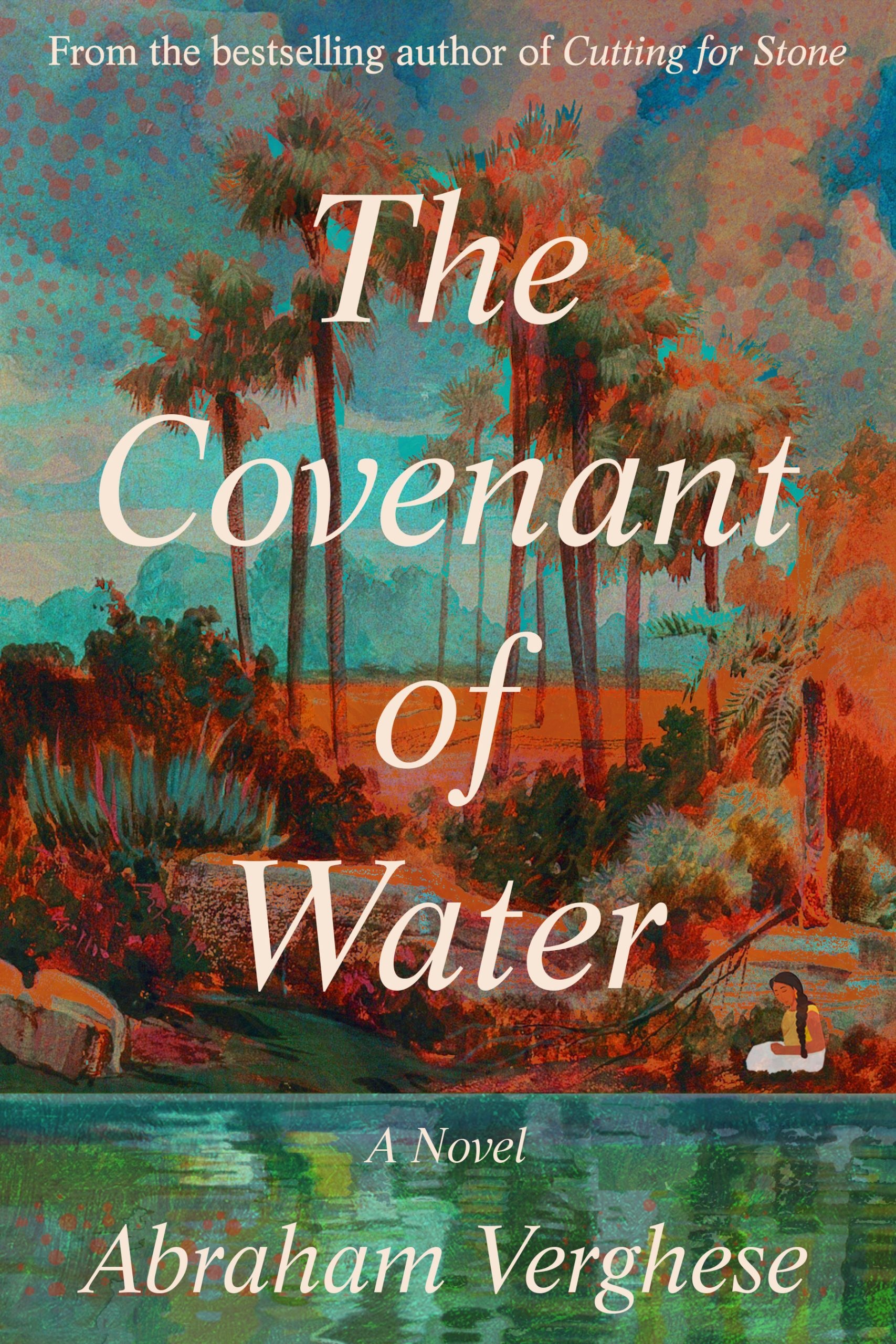 I feel, in a strange way, kind of homeless. I was born on one continent; I live on another. I have family in various places. I suppose that sense of being a perennial outsider is an advantage when I write: you become an astute observer of different cultures, the way people interact. And yet I'm always envious of people who have a home and multiple generations of family in one place.
I feel, in a strange way, kind of homeless. I was born on one continent; I live on another. I have family in various places. I suppose that sense of being a perennial outsider is an advantage when I write: you become an astute observer of different cultures, the way people interact. And yet I'm always envious of people who have a home and multiple generations of family in one place.
Big Ammachi starts out as a child bride, but becomes the matriarch of Parambil. How did you develop her character?
I just fell in love with her as she began to grow and develop. And it was difficult to convey: even though these [arranged] marriages are happening when women are much too young, they are often taken into a family, not just thrown into the clutches of some man. Being married meant a very sad day when they left their childhood home and moved to another house, but they became part of the family there. My great-grandmother and my grandmother were married this way. I'm not recommending it as a way of life, but it wasn't what [modern-day] people would imagine. I took particular pleasure in demonstrating how this inauspicious-appearing marriage became a wonderful relationship, in the end.
How do you decide how much medical detail to include in your books?
I've always been drawn to books that are intensely procedural or technical about a field I don't know much about. I think that explains the popularity of police shows and hospital shows, and Tom Clancy writing about submarines. I think medicine is nothing more than life-plus-plus: life at its most acutely intense, and intensely observed, moments. It's not like submarine technology; it really does involve all of us in a visceral, bodily way. I'm trying to build on the curiosity we all have about the body and what it does. It takes a good editor to tell me whether I'm overdoing it or not doing it enough.
Part of the narrative revolves around a leprosarium. Can you talk about that?
Growing up in Africa and India, leprosy was a common thing to see in the streets. When I got to medical school, some of the most interesting research was being done in the leprosy institutes. A lot of our understanding of T-cell immunity, for example, came from leprosy research. The capacity of leprosy to invade the immune system led to a number of amazing advances in the medical field.
Diseases carry a metaphor, of course. Prior to HIV, leprosy was the disease with the most striking metaphor, carrying shame and repulsion. I felt during my years working as a doctor in East Tennessee and El Paso, Texas, that I was dealing with two diseases: HIV, and what society thought about it. That was crippling in its own way, and led to suicide in more than a few patients. Many of them couldn't deal with the notion of living with this disease and being shunned and shamed.
How do Indian politics--wars, colonization, the Naxalite movement--affect the characters' lives?
That was a delicate and interesting thing to convey. Communism is like a third rail in most of the West, and it's hard to think of Communists as a legitimate political party who get elected, and come in and out of power, like other parties. It was born out of a tremendous inequality between the landed castes and these downtrodden people. After finally ridding India of this colonial power, it must have felt intolerable to still be in shackles. But the Naxalites didn't really succeed in coalescing and becoming a movement, the way that Communists did in China. For the most part, these movements have not lived up to their promises, and people have to deal with the disillusionment, too.
What do you hope readers take away from the novel?
I think good fiction, when it works for us, is conveying a kind of truth. Our experience in the world is limited, but you read novels and you become aware of larger truths than you might understand in your own life. Camus said, "Fiction is the great lie that tells the truth." This is a story, but it's also conveying some truth about our lives.
Working in medicine, one has a strong sense that life is a fatal disease--it's a terminal condition. None of us survive it. One of the only ways to buy yourself time is to enter the world of a novel. You explore different places and meet the characters, and decades pass, and then you put it down and it's Tuesday! I always feel that I've bought myself some extra time in this life when I enter the world of a novel. I hope my readers feel that as well. --Katie Noah Gibson, blogger at Cakes, Tea and Dreams
Book Candy
Book Candy
"Sixth Century Augustine gospels to be used in King Charles III's coronation," Fine Books & Collections magazine reported.
---
Florilegium, for example. Merriam-Webster looked up "11 bookish words for book lovers."
---
The New York Public Library is "celebrating AANHPI Heritage Month with reads for all ages."
---
CBC Books revealed "75 facts you might not know about Anne of Green Gables and author Lucy Maud Montgomery."
Clytemnestra
by Costanza Casati
"Kings are brilliant / mighty / godlike // Queens are deadly / shameless / accursed." Such has been the literary fate of Clytemnestra--adulteress, wife and murderer of Agamemnon in the Ancient Greek canon. Costanza Casati's debut, Clytemnestra, is a dynamic retelling of the story of the much-maligned Spartan princess, sister of Helen, queen of Mycenae, mother of Iphigenia, Electra and Orestes (and others). Aeschylus, Homer and Euripides generally portray Clytemnestra in a negative light, but Casati's reframing--from her title character's point of view--emphasizes the difficult circumstances that challenged a strong-willed woman in a time and place that did not reward such a quality. Clytemnestra is a masterpiece of justified rage on the protagonist's part, and a subtly subversive revision of a story many readers know from a different perspective. She will be called ruthless, merciless, "cruel queen and unfaithful wife," but viewed from another angle, Clytemnestra fights honorably for her own well-being and for that of the people she loves.
The events of Clytemnestra's life are not much rearranged here. As a princess in the Spartan court, she is trained as a warrior and huntress, surrounded by violence and death even in her privilege to sit in the megaron with her father, King Tyndareus, where they hear the villagers' requests. This upbringing emphasizes martial training, physical skill, obedience and the ability to suffer. Her first marriage, to Tantalus, was for love and was a meeting of minds, but it ended in murder and betrayal, and with a forced second marriage to the Mycenaean king, Agamemnon, whose brother Menelaus in parallel marries Helen. Clytemnestra's later lover, the traitor Aegisthus, is a complicated, enigmatic character in his own right. This proud queen, treated as a pawn in political power struggles, wrestles to keep her dignity in the Mycenaean court under the brutalities of her husband, but never loses her sense of herself as a warrior and a survivor. The events of this novel close where Aeschylus's Agamemnon opens, thereby gifting a complex backstory to a woman often portrayed as villain.
Clytemnestra dips its toes as well into the stories of the queen's famous family members: her brothers Castor and Polydeuces, boxers and horsebreakers; her sister, Helen, whose legendary beauty led to the Trojan War; her mother, Leda, who was seduced by Zeus in the form of a swan (or was she raped?). Her children include Tantalus's unnamed infant son; Iphigenia, sacrificed at Aulis to summon wind for the Greek ships on their way to Troy; and Electra and Orestes, whose stories expand only after these pages close. This Clytemnestra is very close and loyal to her siblings; family ties for better and for worse shape her decisions all her life, even at great distances. For instance, meeting a new face, she thinks of her siblings: "Helen would have charmed him with her beauty and subtle cleverness, softening him until he opened like a peach. Castor would have mocked him, pricked him with words like needles, until he talked." Clytemnestra's cousin is Penelope, eventually famous as Odysseus's queen and faithful wife, in marked contrast to the Clytemnestra in traditional representations; here, again, the reader sees a new and complex side of a familiar character, as she is courted by the cunning Ithacan king.
The gods in this version are mere myth, not actors in real events; Clytemnestra, like her mother, is skeptical, even scornful of the gods and their followers. She understands that kings and not queens rule in her world, but she continues to demand the respect she deserves even when it's unlikely she will get it, and consistently calls out the rapes and attempted rapes that often go unmarked in the courts and villages of both Sparta and Mycenae. This retelling is a deepening of Clytemnestra's story and her character. Helen, her beloved sister, likewise grows more multifaceted in Casati's nuanced novel, but the beautiful one is not gifted with physical prowess or the confidence of the fierier Clytemnestra: "Clytemnestra dances for herself; Helen dances for others." Timandra, one of their younger sisters, is fierce like Clytemnestra, but with a different burden in their strict society. These female leads are glittering, glowering, admirable and sympathetic, and the result will reignite (or ignite) readers' interest in the stories of ancient Greece and emphasize their relevance in any time.
Clytemnestra is a stunning, standout contribution to the growing genre of modern treatments of the Greek myths. Casati brings both a solid grounding in the canon and imaginative venturing into the inner workings of a woman who has long been famous but little understood. Her writing is gorgeously descriptive and emotive: "She thinks of those white flowers blooming against the rocks of the Ceadas. For years she wondered how they survived down there, among the corpses and darkness. But maybe this is how broken people keep living.... Outside the light is golden. It shines on them as if they were gods." Casati's Clytemnestra is modern in her staunch demands for dignity and respect, but believably rooted in ancient times. This is a necessary novel for fans of mythology, strong women, the pushing of boundaries and epic dramas of family, power and love. --Julia Kastner
'Now Is the Time to Retell Their Stories'
An Interview With Costanza Casati
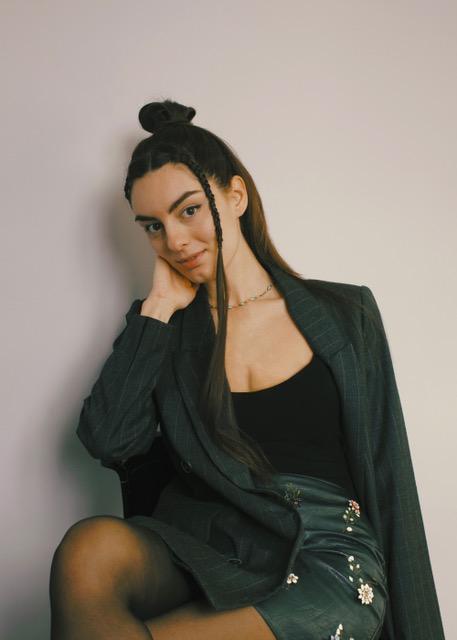 |
|
| (photo: Arianna Genghini) | |
Costanza Casati was born in Texas and has lived in Italy and the U.K. Before moving to London, she attended a classical liceo in Italy, where she studied ancient Greek and ancient Greek literature for five years. She is a graduate of the Warwick Writing MA program and currently works as a freelance journalist and screenwriter. Her debut novel, Clytemnestra (Sourcebooks Landmark), is a striking retelling of the story of Greek myth's queen of Mycenae and murderer of Agamemnon.
Why Clytemnestra? What made her story the one you needed to tell?
So many reasons! She is powerful, clever, fierce, obstinate. In the ancient texts, she comes across as a truly unforgettable character: she is feared and respected for the power she holds and, most of all, she doesn't let the men around her belittle her. And then there are all the myths surrounding her, which I wanted to explore from her perspective. Clytemnestra is connected to some of the most fascinating characters from the myth: she is sister to Helen, cousin of Penelope, lover to Aegisthus, daughter of Leda.
Even her very first mention, which is in the Odyssey, is such an unforgettable one. When Odysseus meets Agamemnon in the Underworld, they speak of their wives, Penelope and Clytemnestra, and Agamemnon says, "Happy Odysseus, what a fine, faithful wife you won! The immortal gods will lift a glorious song in praise of self-possessed Penelope./ A far cry from the daughter of Tyndareus, Clytemnestra/ the song men sing of her will ring with loathing./ She brands with a foul name the breed of womankind."
Cast as a murderess and the archetypally "bad wife" for centuries, Clytemnestra is actually an incredibly modern character: a powerful woman who refuses to know her place. Once you know her story, her entire story, you can't help falling in love with her.
Did writing this novel involve research on top of your academic background?
There are two kinds of research I like to do. There is the more practical, specific kind, which I do in parallel with writing a scene--Which towels did they use? Was soap a thing? Which frescoes were common in Mycenae? What did a typical meal look like in Sparta?--and then there is the "cultural" research, which you must do before writing a novel, and which, in my opinion, is essential for writing historical/mythical fiction. It was very important for me to truly live inside my characters' heads, experience the world through their eyes. So, for instance, a more broad, "cultural" research question would involve things such as: How was guilt perceived in Mycenaean Greece? Did the Greeks fear death? How were women treated in Sparta? Did forgiveness exist for these people? Those are things that must be woven seamlessly into the narrative, but they also must be clear to a contemporary reader. That balance, between re-creating the way in which ancient people thought, and making it accessible to contemporary readers, is the most important thing for me.
It feels like modern retellings of the Greek myths are a genre of their own. Do you have any favorites?
There are so many! The first retellings I fell in love with are The Song of Achilles and The Children of Jocasta. Both take extremely famous characters from the myth--Achilles and Oedipus--and tell their story from the perspectives of lesser-known figures: the shy Patroclus in Miller's novel and Oedipus' wife and daughter in Haynes's book. What I love the most about Miller's and Haynes's writing is the way in which they re-create the mindset of Ancient Greece: concealing impeccable research behind smooth and lyrical prose.
Other favorites of mine include Ariadne, The Silence of the Girls and Circe.
Which characters are yours?
Some of the characters are my own creations: Clytemnestra's guard in Mycenae, Leon, and her faithful servant, Aileen. The elders obviously feature in Aeschylus's Agamemnon but as a chorus, while I gave them names and more specific motives. Then a character that is mine entirely is Cynisca. To write her, I drew on a woman who truly existed (though many years later, and with no connections to Clytemnestra's story): the Spartan woman famous for being the first to win at the Olympic games in 392 BC.
Then there are Timandra, Clytemnestra's sister, and Tantalus, Clytemnestra's first husband, who exist in the sources, but just as passing names. Timandra is mentioned in fragments by poets Stesichorus and Hesiod. They say that Timandra was unfaithful to her husband, just like her sisters, because of a sin their father Tyndareus had committed when forgetting to sacrifice to Aphrodite. I found these fragments incredibly fascinating and wanted to explore Timandra further.
Tantalus of Maeonia (or Lydia) was another character I was drawn to because he is so important to Clytemnestra's story. His name appears in Euripides's Iphigenia in Aulis.
What was the writing process like?
One of the things I loved the most about writing Clytemnestra was bringing to life a female character who is ambitious and loyal, powerful and beloved. I fell in love with this character 10 years ago and wanted others to fall in love with her too. Clytemnestra has been portrayed as an adulteress, a jealous, power-hungry ruler and murderess for centuries, so I really enjoyed playing with these stereotypes and peeling them away to show the woman under them.
One of the hardest parts (which was also incredibly fascinating) was writing the more well-known characters from the myth in a way that felt both fresh and true to the sources. Helen and Odysseus, for instance, are incredibly famous, but I felt like I needed to write them in a way that felt familiar but also unexpected. The same challenge obviously came with the plot. For the people who know the myth, they already know how Clytemnestra's story plays out, so how do you make it interesting and surprising? I tried to bring to light elements and details that were already hidden in the sources and play with them a little bit. Finally, one of the things I loved the most while writing was exploring Clytemnestra's family dynamics.
Is this a feminist retelling?
I would absolutely call this a feminist retelling. "Feminist" because I wanted to write the story of a woman who took part in the action, whose narrative is as epic as the ones of the men and heroes. Besides, Clytemnestra isn't the only powerful woman in my novel: it was essential to me that I wrote a story with a cast of female characters that were clever and complex, flawed and unforgettable.
The women of the Greek myths are incredibly heroic--think Alcestis, Antigone, Ariadne, Circe--and yet throughout the centuries they have been burdened with cultural and ethical codes that make them helpless victims, or, in the case of Clytemnestra and Helen, misogynist archetypes: murderesses and lustful whores. Now is the time to retell their stories. --Julia Kastner
Rediscover
Rediscover: Cutting for Stone
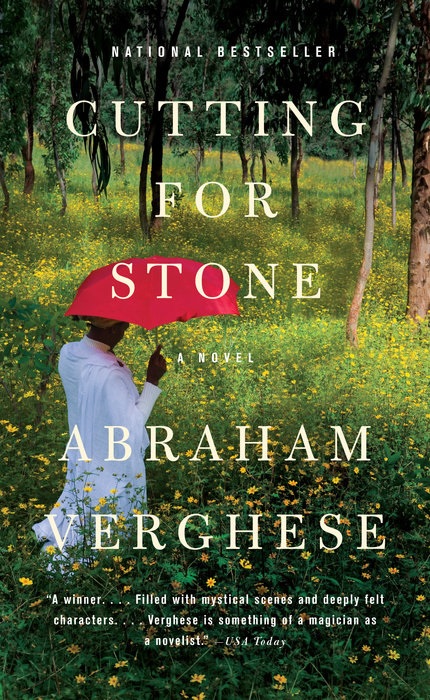
Author, physician, and professor Abraham Verghese's novel The Covenant of Water was released this week to rave reviews and is the latest Oprah Book Club selection. Verghese was born in Ethiopia to Indian parents, and his family moved to the United States after the overthrow of Haile Selassie. He worked briefly as an orderly before finishing medical school in India. Verghese's residency was in Johnson City, Tenn., where he encountered the initial wave of rural HIV infections in the mid-1980s. His experiences with so many dying patients, most of them abandoned by their friends and families, inspired his first book, My Own Country (1994), which is used in many medical schools to convey the importance of compassion and empathy.
Verghese attended the Iowa Writers Workshop before accepting a professorship in El Paso, Texas. The breakdown of his first marriage and the death of his tennis partner, a medical resident struggling with drug addiction, inspired Verghese's second book, The Tennis Partner (1999). He now practices and teaches at Stanford University School of Medicine.
Verghese's first novel, Cutting for Stone (2009), sold more than a million copies and spent two years on the New York Times bestseller list. It follows the orphaned twins of a nun who dies in childbirth and an English surgeon who abandons them in Addis Ababa. They are raised in Ethiopia by an Indian couple, where tumultuous political events and adolescent rivalries force the brothers onto diverging paths. The novel showcases Verghese's medical knowledge with vivid depictions of many diseases and surgeries. Cutting for Stone is available in paperback from Vintage.
| Advertisement Meet belle bear! |



